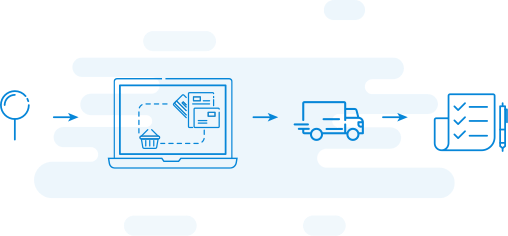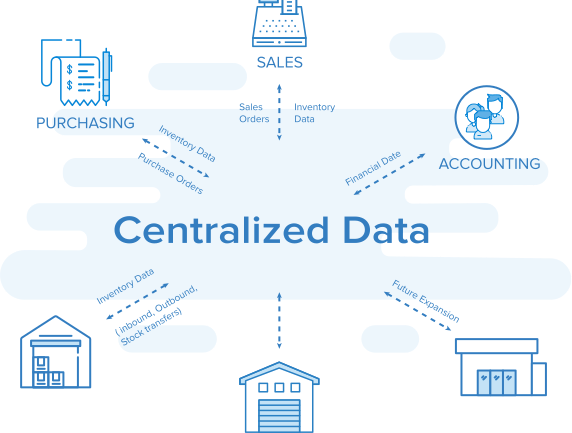Omnichannel Retail Guide Chapter 2
The importance of omnichannel retail
While eCommerce seems to grow substantially, physical stores still continue to dominate in most categories. Thus, to succeed in today’s omnichannel retail world, business owners need to boost sales in both online-offline stores by embedding accurate retail insight into their merchandising process. This chapter will help you understand why a retail needs to go omnichannel by answering 2 questions:
- How customers have changed their shopping behaviors
- Why omnichannel retail insights has gone beyond customer expectation
The rise of omnishoppers
In the “Internet of Things” era, every retailer is expected to have an online webstore. In the early 2000s, it was predicted that eCommerce would soon dominate the whole retail market due to the convenience of making a purchase within some clicks.
However, this scenario has not come yet, since statistics from Omnichannel Shopping Preferences Study have shown that:
95
61
66
These figures seem to turn retailers to focus more on physical channels, but let’s have a look at the chart below:
Source: Harvard Business Review
As shown in this chart, only 7% of customers are online-only shoppers, and 20% of them are offline-only customers.
This points out a huge number of 73% of customers shopping across channels. It means that nearly 3⁄4 of customers are using multiple channels during their shopping journey.
However, what they demand now is more than shopping in multiple channels. They expect to experience near-real-time shopping journeys in various channels, which is called omnichannel retailing. Consequently, the majority of multi-channel customers will be simply converted to omnishoppers.
Higher customer’s expectation

In the digital century, people can connect with each other with a click.
You can inherently see the fun fact that the number of devices now is bigger than the number of people in your house. It means that modern consumers have plenty of channels to approach your products as well as your competitors’ and that has changed the eCommerce rules.
Particularly, good looking eCommerce site is not enough for your business to succeed in the long way.
Moreover, you need an accurate retail insight on customer expectations, such as the high speed and the convenience customers gain when shopping at your store (both online and point of sale at physical stores).
No matter what they are searching for, a $10,000 watch or a $10 toothbrush, they don’t care about anything but a seamless buying experience.
What customers expect is meet – need.
And this is the origin of “Why omnichannel is important”.
Let’s study an example. If a customer comes to a store and her favorite product is out of stock, she can easily lose her interest in that store. Even in case the staff can quickly check and summon that item from other branches, it will take so long.
Imagine that a 90-second red traffic light can drive people crazy, so how long she can stand waiting for that staff?
In the end, she expects that her favorite product has to be always in store. Otherwise, within the period of a click, she would like to know how she can get it, where she can go and pick it up at the store or when she gets it shipped to her house.
Similarly, online shoppers expect the same thing. They don’t want to see the “unavailable” or “Out-of-stock” tag under their favorite products in the webstore.
Besides, according to a survey conducted by Force, 98% of interviewed people believe that purchase, delivery, and returns should be accessible through all channels.
In a nutshell, it indicates that the ongoing digitalization has resulted in a new generation of customers who use different channels and devices during their buying journey. They also express an increasingly higher expectation from retailers, especially a seamless experience rather than just high-quality products or services.
Fortunately, omnichannel retailing would give retailers the view of retail insight to solve successfully these perennial problems.
It allows shoppers to purchase products on many well-integrated channels to create a seamless experience for customers. Thus, businesses could meet consumer demand.
Omnichannel retail insight from retailers’ view
Cross-channel inventory visibility

Cross-channel inventory visibility
Inventory management is an intense pain to most retailers, especially those who sell across many channels. They encounter several challenges when managing multiple warehouses.
That is why the key of modern retail insight has become omnichannel. It evolves to be an end-to-end supply chain management empowered by cross-channel inventory visibility.
Basically, omnichannel inventory management depends on 4 main factors:
Inventory allocation
It includes allocating the purchases to each warehouse and tracking the shipment, whether in a separate inventory strategy or a shared inventory strategy. Another powerful ability is to predict the supply need for each channel based on sales history.
Purchase management
It is coherently synchronized with inventory data in all warehouses so that you can automatically manage all the suppliers and purchases through one screen. It helps reduce the risk of out-of-stock situations since retailers are always updated about real-time inventory data.
Order fulfillment
With omnichannel retail insight, data from all channels are synchronized. Retailers can easily manage orders while consumers can buy items online and pick them up in store. Omnichannel fulfillment offers a seamless consumer experience regardless of how and where people shop or return items.
Real-time and overview report
Omnichannel strategy requires all data to be centralized. It means that retailers can have a real-time and overview report of inventory and purchases within a click.
Boost sales
First, it is easy to understand that omnichannel insight drives greater sales than multi-channel or single-channel.
Omnichannel shoppers tend to spend more than any other types of channel.
For example, online customers are able to compare the price and are easily distracted by alternative options, and other things, which leads to a large amount of cart-abandon and a high chance of losing interest.
Besides, according to the International Council of Shopping Centres (ICSC), 61% of those who purchased online and picked up in store make an additional purchase in person.
In their research, for customers who only shop online before in-store, promotions double the profit. In contrast, for customers who only shop in-stores, online coupons lower the profits by nearly two times.
However, noticeably, it is reported that omnichannel customers spend 20% more than multi-channel customers. Multi-channel retailers also have both online and offline platforms. In other words, retailers who are adopting Omnichannel insight could use online to score offline wins.
A recent survey by HRC Advisory brought home the truth that nearly 75% of respondents found e-commerce transactions were stealing sales from store fronts.
People think Omnichannel Retail Insight is all about customer experience and continue to look at online and offline as 2 disjoint channels instead of leveraging one to support the other, despite the fact that 2 factors could sustain each other very well.
For instance, Beacon technology helps retailers communicate with customers using an online app to enhance their omnichannel retail system.
Based on the user’s previous shopping behavior, personal offers are sent to the user when they are in the vicinity of a store (special offers are generated based on their shopping history). Thus, companies could reap upselling, as well as cross-selling again.
Furthermore, according to a study by Business Insider, beacon sales drove sales in retail by $40 billion in 2016.
In brief, only a handful of retailers have currently applied an Omnichannel retail system to drive its huge potential for in-store sales.
In such a constantly evolving market landscape, those who understand the omnichannel insight and why omnichannel retail insight is important will dominate the retail race.
Customer service
Have you ever wondered why many studies say that:
Omnichannel customers got a higher retention rate than customers in other types of retailing models.
Omnichannel insight can help retailers to overcome multi-channel drawbacks. One of those is customer service.
With the former retail models, customers’ feedback or requests are scattered among many platforms such as social networks, live chat, email, call centers, etc. This will put huge stress on Customer Service teams in any company.
Members of the Service team always have to think quickly to prevent drawbacks before an angry customer experience turns into a bad review on the website or social media.
However, with the automatic process of customer service in omnichannel retail, with the help of a trustworthy omnichannel solution, all of the work can be done efficiently.
Moreover, omnichannel allows retailers to keep track of customer satisfaction with each product by the synchronization of data.
Omnichannel retail insight demands a customer-centric view.
As a result, customer behavior will be analyzed and synchronized into a system based on customer purchase history. Then retailers can work on the plan to create customer quality services by providing good customer support, detailed and precise information, and giving personalized experiences.
Furthermore, interacting with customers across multi-channel, instead of solely at the physical store’s point of sale, also produces big data which could help your staffs support customers beyond their expectations.
Continue Reading
Previous Chapter
What is Omnichannel Retail
Next Chapter
Omnichannel Strategy for Retailers






